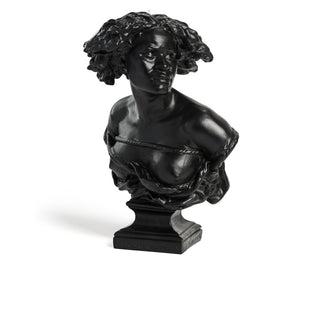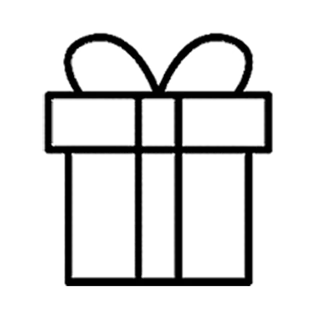

Description
Pourquoi naître esclave (Why born a slave) è il nome dato dallo scultore e pittore Jean-Baptiste Carpeaux (1827-1875) a una serie di busti che ha creato intorno al 1870.
Al culmine della sua carriera, godendo della protezione di Napoleone III, Carpeaux fu incaricato dalla città di Parigi di progettare la Fontaine de l'Observatoire e modificò leggermente il tema che gli era stato imposto - i quattro punti cardinali - sostituendoli con personaggi allegorici che personificavano Europa, Africa, Asia e America .
Mentre lavorava alla rappresentazione dell'Africa, gli venne l'idea del busto del Négresse Captive.
Ossessionato dalle rappresentazioni fedeli del movimento umano, scolpì il suo schiavo in un angolo per esprimere rivolta.
La storia narra che la donna che ha posato per il busto avrebbe potuto essere anche il modello della "Capresse des colonies" di Charles Cordier nel 1861.
Description
Pourquoi naître esclave (Why born a slave) è il nome dato dallo scultore e pittore Jean-Baptiste Carpeaux (1827-1875) a una serie di busti che ha creato intorno al 1870.
Al culmine della sua carriera, godendo della protezione di Napoleone III, Carpeaux fu incaricato dalla città di Parigi di progettare la Fontaine de l'Observatoire e modificò leggermente il tema che gli era stato imposto - i quattro punti cardinali - sostituendoli con personaggi allegorici che personificavano Europa, Africa, Asia e America .
Mentre lavorava alla rappresentazione dell'Africa, gli venne l'idea del busto del Négresse Captive.
Ossessionato dalle rappresentazioni fedeli del movimento umano, scolpì il suo schiavo in un angolo per esprimere rivolta.
La storia narra che la donna che ha posato per il busto avrebbe potuto essere anche il modello della "Capresse des colonies" di Charles Cordier nel 1861.



